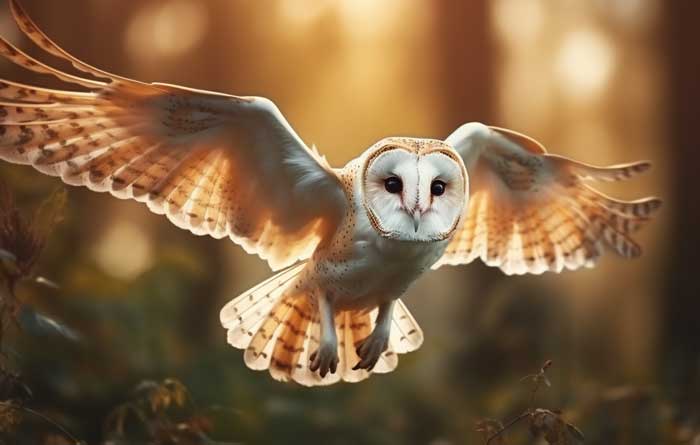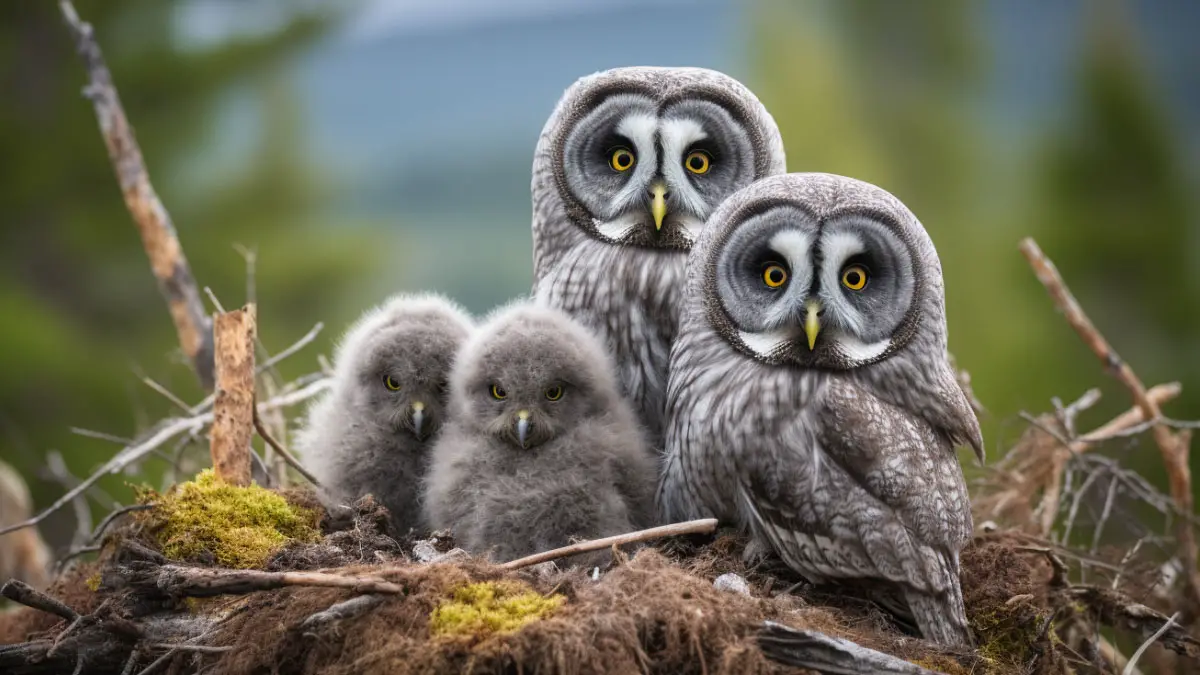Owls are known for their remarkable adaptations and activities. They are silent flight, razor-sharp talons, and superb night vision. Thus, it has caught the interest of many people. People always wonder if they poop, how they poop, and how much they poop.
So, do owls poop? Yes, they do poop. Their biological processes depend on this inherent body activity. Owls have a specialized digestive system that breaks down food effectively.
Throughout this article, we will give you an overall idea about how they poop and how much they poop, whether owls poop Smell. So, keep reading, and don’t miss any important glimpses.
Do Owls Poop?
Yes, owls do poop, and they have two ways of getting rid of waste from their bodies. Adult owls must remove soft tissue, teeth, bones, fur, and feathers they eat of prey to complete their meal.
Soft parts pass through the owl’s stomach, intestines, and cloaca. At the same time, indigestible hard material is compressed on the second stomach and discharged as a pellet from the mouth.
Owls have an upper and lower stomach from birth. The esophagus transports prey from an owl’s mouth to its “glandular” stomach. Only soft prey is digested here. Owls use this digestive mechanism to efficiently extract nutrients from their diets and prepare indigestible components for disposal.

The gizzard grinds are digested into finer particles. Then, that substance enters the owl’s small intestine for ultimate digestion. The owl excretes waste from its cloaca through the vent. Thus, owls promote optimal nutrient absorption and waste disposal in these interesting birds.
Owl’s guts don’t digest their skull, bones, teeth, fur, or feathers. These rigid components are compressed into an oval pellet by the gizzard’s powerful muscles.
The owl discharges this poop from the first stomach safely. Then, it eliminates indigestible components without the discomfort of processing bone-laden meals as pallets.
How Does Owl Poop Look?
Oval pellets resemble enormous hairballs. Owl pellets, made of compressed bones, hair, and feathers, reveal these nocturnal hunters’ diets. An owl excretes from its stomach is white, watery, and slimy in appearance.
This excrement resembles splotches of white paint. Because of the uric acid, it appears white. If you suspect an owl is roosting in your shed, look for white owl poop dried into the wood around it and the surfaces below.
Pellets are sometimes found intact, revealing the owl’s feeding activity as they vomit these well-prepared packets during waste disposal. A barn owl’s poop can be both black and white.

The Smell of Poop:
The smell of owl poop is like rotting meat. It is similar to the smell of human poop that comes from eating meat. This is because the animals that were eaten are breaking down.
The pellets that the owl vomited, on the other hand, had a unique smell but not the bad smell that comes from processing. Because these pellets look like vomit.
It contains hard things that haven’t been digested yet. This process not only gives you a unique smell experience but also shows how complicated an owl’s digestive system is. Thus, you can see pellets that they throw out as a result of their eating habits.
Pellet Identification Different Owl Species
Owl pellets are not the same as other types of waste. They are the unprocessed, hard leftovers of prey that owls consume. Teeth, feathers, bones, and even skulls have been found in them. These oval-shaped lumps form in the owl’s second stomach before moving back to the first.

Figure: Owl’s pelleting
The owl throws up the pellet again after about 10 hours. It appears sick because it bends forward and closes its eyes as if unwell and throwing up.

Figure: Pelleting of cute owl
Here is the pellet identification of different owl species with pictures.
Bran Owl Pellet Identification:
Barn owl pellets are typically spherical or cylindrical. They are found at roost places. They are around 5 cm by 3 cm in size. It has a smooth surface coated in a blackish-gray crust. The barn owl is the most likely owl species to consume shrews.
Tawny Owl Pellet Identification:
The tawny owl’s pellets are generally grayer. You may have seen more “fur” than the barn owl’s. They are about 20 to 50 mm long and have a rough surface. They have an irregular, long, narrow shape that tends to thin at one end.
Here is the video of their pelleting,
Barrel Owl Pellets
Barrel owl pellets are circular, brown, & odorless. It is regurgitated by those owls and other birds 6 to 10 hours after a meal.

Figure: Barrel owl pellets
Great Horned Owl Pellets
Just like barn owls, great horned owls poop out pellets which are filled with fur and bones. Great horned owl pellets are harder and thicker to find than barn owl pellets, making them a treasure hunt. These pellets contain a variety of materials.

Figure: Great Horned Owl Pellets
Snowy Owl Pallets
Its length started at 3 inches. Here, we are sharing a picture of it,

Figure: Pellet of a snowy owl
Long-eared Owl Pellets
Long-eared owl pellets’ average length is 2-3 inches. It can reveal the owl’s nutrition and feeding habits.

Figure: Long-eared owl pellets
Identification of Baby Owl poops:
Baby owl’s poops are smaller in size. They are in beetle elytra blue-black. You may find their pellets are gray in the winter and include the remnants of mice and small birds.
Here, I am sharing picture pellets of different owls. Take a glimpse.

Figure: Pellet of different owls
Aging of Owl’s Pellets:
You can see almost all freshly generated Barn Owl pellets are black and moist. Fresh ones may even leave a little black residue on your fingers. These pellets normally take roughly 2 years to dissolve when left undisturbed in dry settings such as barns or tree cavities.
Barn Owl pellet’s color and texture serve as a visual reference to their age, providing significant insights regarding the timing of their breakdown. If you want further information on the aging process of Barn Owl pellets or anything else relating to these interesting birds.
Here, we are sharing the same picture,

Figure: Pellets of owls of different ages.
How Much Do Owls Poop?
Normally, how much they poop depends on how much they eat. Generally, they eat mice, small rats, voles, and shrews. Their pooping rate also depends on their size and age. On average, owls produce two pellets per day.

Is It Possible for Owls to Poop While in The Air?
Owls don’t usually poop while they’re in the air, but they can if they need to. So, you may have seen them pooping in the air. However, they like to go poop right before takeoff to improve their flight ability by losing weight.
This smart move fits with the owl’s fast metabolism. Thus, owls break down food quickly and get rid of waste whenever they need to. In this way, they take off to make sure they are as flexible and comfortable as possible during their flying.

Do Owls Use Their Poop for Any Purpose?
No, they don’t use their poop for any purpose. But, the undigested bones and tissues they eat or pellets are used to make nests.
However, scientists and researchers often analyze owl pellets or regurgitated materials to learn about owl diets and habitats. They use owl excrement, the leftover components of their food may assist us in understanding their ecological dynamics. They also study bacteria and viruses on poops.
FAQs
Here, we are answering some frequently asked questions, so keep reading,
No, Owls do not pee. Instead, they excrete uric acid. It is also known as “owl whitewash,” using their cloacas.
Yes, they make pellets, but pallet-making is different as their mothers cut food smaller. Thus, baby owls can digest properly. Then, they make pellets.
Conclusion:
Throughout the article we unveiled “Do owls poop?” You must understand the difference between poop and pellet. We tried to give you insight into how they deal with undigested bones, teeth, and other materials.
To conclude, pellet-shaped owl poop helps the digestive tract eliminate indigestible material. Owls don’t use their feces. However, by studying these pellets, scientists understand their diets and local ecosystems.








